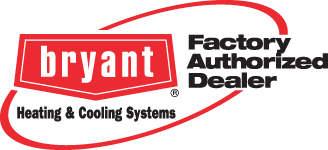HVAC Unit Sound Ratings
Interpreting the Sound Ratings of an HVAC Unit
Common Sounds
This decibel (dBA) table compares some common sounds and shows how they rank in potential harm to hearing. In many industries, workers are exposed to dangerous noise levels. This is particularly true in the construction, lumber, mining, steel and textile industries. Consider these volumes in context of your air conditioner replacement or furnace replacement or other heating system service or cooling system services.
| SOUND | NOISE LEVEL (dBA) | EFFECT |
| Jet Engines (Near) | 140 | |
| Shotgun Firing | 130 | |
| Jet Takeoff (100-200 Ft.) | 130 | |
| Rock Concert (Varies) | 110-140 | Threshold of pain (125 dB) |
| Oxygen Torch | 121 | |
| Disco/Boom Box | 120 | Threshold of sensation (120 dB) |
| Thunderclap (Near) | 120 | |
| Stereo (Over 100 Watts) | 110-125 | |
| Symphony Orchestra | 110 | Regular exposure of more than 1 minute risks permanent hearing loss (over 100 dB) |
| Power Saw (Chain Saw) | 110 | |
| Jackhammer | 110 | |
| Snowmobile | 105 | |
| Jet Fly-over (1000 Ft.) | 103 | |
| Electric Furnace Area | 100 | No more than 15 minutes of unprotected exposure recommended (90-100 dB) |
| Garbage Truck/Cement Mixer | 100 | |
| Farm Tractor | 98 | |
| Newspaper Press | 97 | |
| Subway, Motorcycle (25 Ft) | 88 |
Very annoying
|
| Lawnmower, Food Blender | 85-90 | Level at which hearing damage begins after 8 hours (85dB) |
| Recreational Vehicles, TV | 70-90 | |
| Diesel Truck (40 Mph, 50 Ft.) | 84 | |
| Average City Traffic Noise | 80 | Annoying; interferes with conversation; constant exposure may cause damage |
| Garbage Disposal | 80 | |
| Washing Machine | 78 | |
| Dishwasher | 75 | |
| Vacuum Cleaner | 70 | Intrusive; interferes with telephone conversation |
| Hair Dryer | 70 | |
| Normal Conversation | 50-65 | |
| Quiet Office | 50-60 | Comfortable (under 60 dB) |
| Refrigerator Humming | 40 | |
| Whisper | 30 | Very quiet |
| Broadcasting Studio | 30 | |
| Rustling Leaves | 20 | Just audible |
| Normal Breathing | 10 | |
| 0 | Threshold of normal hearing (1000-4000 Hz) |
Since the sensitivity of the ear to sound is not the same for all frequencies, weighting or attenuating filters are included in the sound level meter’s circuits to simulate the ears’ response. A noise level meter gives an instantaneous measurement of the noise present, but cannot measure the duration of the exposure. To measure the amount of noise a person is exposed to over a period of time, a “dosimeter~ or an integrated sound level meter must be used. Sources for above include the American Medical Association and the Canadian Hearing Society of Ontario. Decibel table developed by the National Institute on Deafness and Other Communication Disorders, National Institutes of Health, Bethesda, Maryland 20892. January 1990.
If you have any questions about the sounds or volume being emitted by your HVAC equipment, just contact us and we can look into it. As a leading local HVAC company, we are always interested in our customers having a comfortable home environment.
Address: 4040 SE International Way
STE E105 Milwaukie, OR 97222
Hours: Mon – Fri: 7AM – 6PM
Sat – Sun: by Appointment
CCB# 187834






